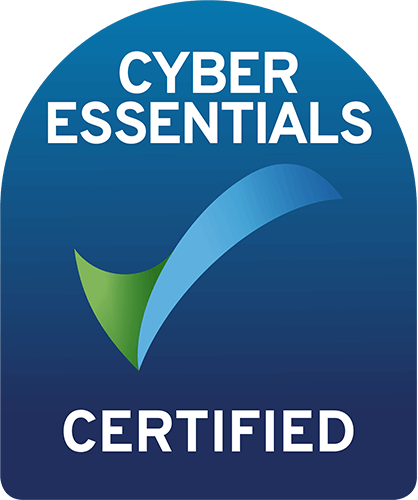In pharmaceutical strategy, competitive simulation workshops (sometimes referred to as war games) are a standard tool. They are widely accepted as best practice – woven into brand planning, launch readiness, and lifecycle management. When done well, they can sharpen foresight, galvanize teams, and create the urgency required to make decisive moves against competitors.
But the reality is that many competitive simulations fail to deliver their promise. Despite their prevalence, too many remain routine exercises: highly choreographed events that give the impression of preparation while entrenching existing assumptions. In today’s environment where competitive pressure is intensifying, timelines are compressing, and new entrants are redrawing market dynamics, a poorly designed workshop doesn’t just waste time – it risks cementing bad strategy.
What separates a box-ticking exercise from a transformative experience is typically not the format, but rather the design and facilitation.
7 Reasons Competitive Strategy Workshops Fall Short
The shortcomings of competitive simulation workshops are rarely about intent; they are about execution. Too often, workshops are planned around the event rather than the outcome. Logistics dominate: ensuring the right participants, managing the agenda, circulating background decks. What gets overlooked is clarity on why the workshop is happening in the first place. Without a defined strategic purpose – what decision needs to be made, or what assumption needs to be stress-tested – the result is activity without impact. Several recurring pitfalls stand out:
1. Competitor framing is too narrow
Internal teams often define their competitor set conservatively – focusing on familiar players rather than potential disruptors. That can mean overlooking non-traditional entrants or ignoring emerging strategic models that competitors may be exploring. Missing these signals can leave a launch strategy exposed to threats that could have been anticipated.
Avoid it by expanding the competitive lens →
2. Scenarios lack stretch
Teams tend to design competitive simulation scenarios that mirror their own expectations or anticipated competitor moves – but predictable scenarios only validate the existing plan. They don’t stretch thinking to uncover blind spots and identify key opportunities.
Avoid it by introducing productive tension →
3. Workshops become briefings, not simulations
Too much time is spent reciting information, not “living” the competitor mindset. True competitive simulation requires immersion: understanding competitor motivations, constraints, and risks. Without that, participants remain observers rather than actors.
Avoid it by creating immersion, not narration →
4. Focus is limited to the event, not the outcome
Competitive workshops are sometimes treated as calendar items. Planning centers on logistics – getting the right participants in the room, managing slides, or sticking to the agenda – without clarifying what decisions need to be tested or validated. The result is activity without impact.
Avoid it by focusing on decisions, not just discussion →
5. Cross-functional presence ≠ cross-perspective
Having medical, commercial, market access, and regional colleagues in the room does not guarantee diversity of input. Senior voices can dominate; established market biases can skew the debate. Without an effective facilitator to manage dynamics and draw out quieter perspectives, achieving true balance is difficult – and the “simulation” risks reflecting the loudest view rather than a genuine synthesis.
Avoid it by balancing contributions →
6. Facilitation lacks neutrality and challenge
Many companies hand facilitation to an internal moderator who often focuses on time-keeping or managing discussion flow. What’s often missing is the ability to challenge assumptions, mediate group dynamics, and bring objectivity. Without these, workshops reinforce consensus instead of interrogating it.
Avoid it by bringing strategic objectivity →
7. Workshop outputs fade
Even when strong insights emerge, they can easily be lost if not translated into concrete actions. Without a mechanism to convert outcomes into decisions, owners, and accountabilities, post-workshop momentum dissolves. The risk? Teams walk away with notes, but strategy remains unchanged.
Avoid it by translating insights into execution →
The consequence of these missteps is not just inefficiency. It’s strategic risk: missing critical competitor threats, failing to prepare for disruptive entrants, or misjudging how a regulator, payer, or prescriber base might respond. In an era of heightened competition, those misses can define the trajectory of a brand. So, how do you successfully simulate, in order to stimulate?

How a Thought-Partner Facilitator Changes the Game
The difference between a routine competitive simulation workshop and a transformative one is rarely the slides or breakout groups. It is the presence of a thought-partner who shapes the process before, during, and after the workshop.
A strong partner does more than simply facilitate – they:
1. Expand the competitive lens
Expert facilitators push teams to look beyond the obvious – to consider alternative business models, disruptive technologies, and unconventional entrants. This is especially vital in markets facing multiple launch timelines or global/local asymmetries.
2. Introduce productive tension
When conversations drift toward predictability, a thought-partner injects challenge. They deliberately push the team to test the robustness of their strategy under uncomfortable conditions.
3. Create immersion, not narration
Competitive simulations that allow participants to step into competitors’ shoes encourage deeper understanding of motivations, risks, and trade-offs – moving teams from passive observers to active strategist.
4. Focus the workshop on decisions, not discussion
Preparation begins with a clear view of what must be decided or tested. Every scenario, exercise, and dialogue should be designed to drive toward that outcome.
5. Balance contributions
Effective facilitation ensures that all functions, regions, and seniority levels are heard. It prevents dominance by a few and ensures diversity of thought. Bring strategic objectivity. Free from internal politics or legacy assumptions, an effective external partner creates the space to surface uncomfortable truths and promote non-consensus thinking.
6. Bring strategic objectivity
Free from internal politics or legacy assumptions, an effective external partner creates the space to surface uncomfortable truths and promote non-consensus thinking.
7. Translate insight into execution
Outcomes are not just “captured” – they are structured into actions, owners, and timeframes. Competitive simulation insights feed directly into strategic planning, not into a forgotten appendix.
Importantly, this partnership extends both ahead of and well beyond the workshop day. The most effective workshops are built on the right preparation – challenging assumptions, pressure-testing the competitor set, and aligning the team on the real strategic questions before anyone enters the room. This front-end work determines whether the conversations in the workshop will stretch thinking or simply confirm it.
Why This Matters Now More Than Ever
The pharmaceutical market is moving faster than ever. Novel entrants are reshaping therapeutic categories, development and launch timelines are compressing, and stakeholders are demanding more rapid, evidence-driven decisions. In this environment, the ability to anticipate competitor moves and act decisively has never been more critical.
Competitive simulations, when executed effectively, are one of the few tools that simulate real strategic stress. They help teams anticipate challenges, adapt plans, and make robust decisions under pressure. Increasingly, AI is becoming a powerful complement in this process – able to process competitive data, identify emerging patterns, and generate scenario options. Yet AI alone cannot create the shared understanding, cross-functional alignment, or competitor mindset that comes from experienced facilitation teams actively driving the process.

Ultimately, the differentiator is not simply whether an external company runs a competitive simulation workshop, but how well it is executed. A strong thought-partner can transform a standard format into a workshop that delivers deeper insights, sharper decisions, and stronger alignment. That combination – strategic design, human insight, and effective execution – is what creates urgency, resilience, and actionable strategies in the face of rapid competitive change.
Before Your Next Competitive Simulation, Ask Yourself:
- Will the workshop genuinely stretch thinking, or will it simply confirm existing plans?
- Is it structured to drive real strategic choices, rather than just spark discussion?
- Are we truly stepping into the competitor’s mindset – or only narrating it?
- Are we challenging ourselves hard enough to uncover blind spots and find the winning opportunities?
- Do we have a facilitator who is there not just to manage the agenda, but to drive clarity, challenge thinking, ensure balance, and manage follow-through?
The goal of a competitive simulation workshop isn’t to check a box. It is to sharpen strategy. And in today’s high-stakes environment, that depends less on the workshop format itself and more on the strength of its design, challenge, and facilitation. At Align Strategy, we specialize in helping teams design and run workshops that truly stretch thinking, surface critical insights, and translate strategy into action. To explore how Align Strategy can help your next competitive simulation drive real impact, reach out to our team today – or explore our full range of competitive strategy services.


